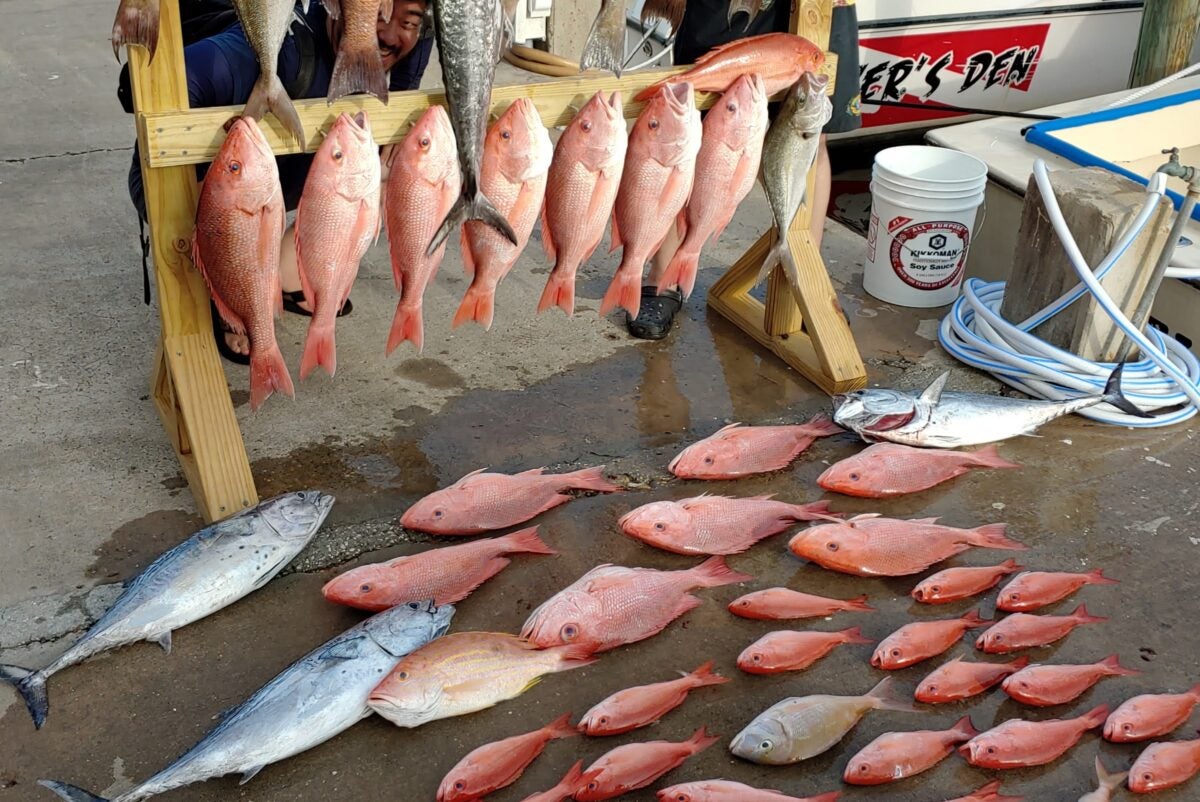The Upgraded Alabama Snapper Check Program
Eugene L. 06.08.23

Summer is here and so is American Red Snapper Season, and so are the field samplers from the Alabama Department of Conservation and Natural Resources (ADCNR). This year there’s a technological upgrade as well, say bye-bye to paper forms and say hello to electronic tablets. In an effort to make things easier for anglers Alabama Department of Conservation and Natural Resources (ADCNR) has deployed tablets for collecting data and submissions as a part of the state’s Snapper Check Program.
“This switch to tablet-based data collection from paper streamlines our process and results in the availability of more timely data,” said Kevin Anson, ADCNR, Marine Resources Division, chief marine biologist. “This also improves our quality control process, which leads to better data. Samplers will be able to more efficiently collect information from recreational anglers, which, in turn, will increase the number of interviews conducted per assignment.”
Currently, the Alabama Snapper Check program collects catch and effort info from owners and operators of state for-hire vessels, and private recreational fishing vessels who bring in either red snapper, gray triggerfish, or greater amberjack from the Gulf of Mexico. The program consists of two components. An electronic reporting system that anglers can provide catch and harvest information for these three species after each fishing trip. The second is dockside survey to gather trip info along with measurements from the landed fish, American red snapper in this case.
NOAA Fisheries also had a hand in the program, providing funding for the development, testing, and implementation of the tablets for the dockside interviews. There was also additional support from the Gulf States Marine Fisheries Commission’s Fisheries Information Network. NOAA Fisheries encourages the use of electronic tech to improve and complement data collection for fisheries wherever applicable.
“We are committed to working with our partners to develop sound electronic reporting tools and advance the appropriate use of electronic reporting technologies to improve our program,” said Katherine Papacostas, NOAA Fisheries, Marine Recreational Information Program branch chief.
A key part of MRIP is to support its partners.
“We work closely with our state and regional partners to help them meet data collection needs within their unique recreational fisheries,” said Papacostas. “This includes access to technical resources, statistical support, and funding.”
Back in 2018, the design for the Alabama Snapper Check was certified by NOAA Fisheries. The program was proven to be statistically valid in its approach for monitoring the catch of red snapper in respect to the annual catch limit. Certification was the first step for the potential use of any new survey data and estimates in future federal fisheries assessment and management. The Alabama Snapper Check if just one of several surveys in the Gulf that have been developed by the Gulf States to be more involved in the management of the American Red Snapper with NOAA Fisheries.
“Sustainable fishing starts with the data,” said Gregg Bray, GulfFIN program coordinator. “We are continuously working with our partners to find ways to advance and streamline our data collection methods. The successful implementation of this project underscores the importance of our federal, regional, and state partners working together to evaluate and improve recreational fishing data.”
